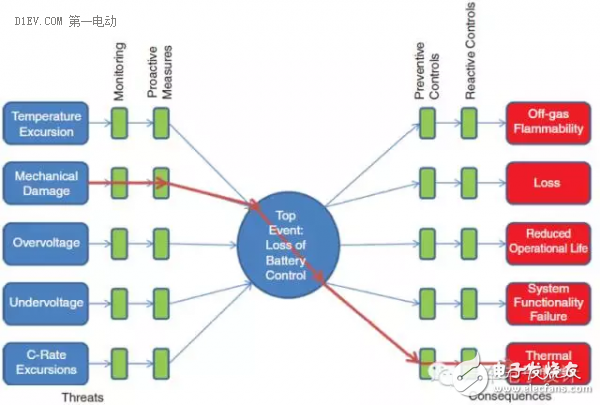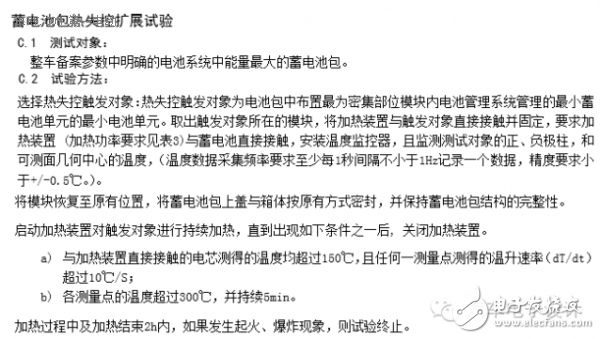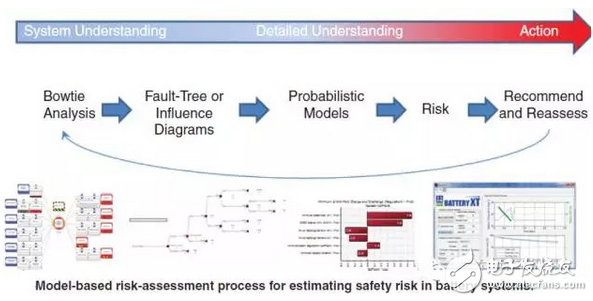It is said that safety is the lifeblood of power batteries. Recently, I have been thinking about the reasons for the fire of the battery system from the inside out. Here, I mainly consider the reasons for pushing one layer at a time, and then consider putting the previous and future accidents into the match. Then, based on the actual design of each model, the PPM (parts per million) of the accident will be estimated. The names of all manufacturers have been removed below. The discussion of this topic is not directed at any enterprise and is not judged.
This is an experimental dimension that assumes a single problem and then extends to the global. It can be seen from the figure:

The whole analysis was only created to match the extreme events of the battery system fire. We separated the content abused by the machine. The design of the battery system is based on placing a safer position on the vehicle to prevent problems during the use of the vehicle. Although the entire mechanical design is currently a lot of experimental safety content such as acupuncture and extrusion, the problem caused by mechanical abuse has become a problem that everyone can easily solve.

Take the three accidents in Tesla as an example:
1. A fire broke out in Smyrna, Tennessee, USA. The electric car rushed to the trailer hook that fell off the road. A fire broke out after the chassis crashed.
2. The driver slammed into the corner when he turned and crossed a concrete wall. He eventually crashed into a tree and stopped to catch fire.
3. The owner of the Seattle car crashed into a metal scrap on the road, so he left the highway. After the car failed, he smelled the burning and the car was burning.
This mechanical design is also simple, and you can get immediate results by considering more protection on the perimeter of the structure and the bottom cover.
We take the things that happened this year and remove the manufacturers. Can we think about whether the car is fired outside the battery or the battery? A large part is the load outside the battery, and the overheating of the cable causes the peripheral part to be ignited more.
Here we can divide the basic three layers, the essential reasons for the fire:
1. Thermal energy release in the battery that is not designed as intended + internal and external combustion products
2. Combustible gas release + ignition point in the battery
3. Combustible liquid release + ignition point in the battery: This mainly includes two parts: electrolyte leakage and coolant leakage.
We can consider the release of thermal energy from the battery system:
1. Battery pack or battery unit overcharge
Overcharge is generally a common cause of thermal energy release. The battery pack-level thermal runaway event can be subdivided into multiple batteries (module, monomer overcharge), battery overcharge and electrolyte evaporation overheating, and It is the overcharge caused by the calculation of the remaining battery capacity (SOC) error, the energy recovery due to the protection in the high SOC state, and the overcharge caused by the charging control program jam.
2 short-circuit over-current heat release
A battery pack/high voltage circuit failure causes a short circuit and dissipates heat. Mainly caused by internal short circuit and external short circuit of the battery pack, causing overheating of the conductor and the connector, and overheating of the monomer to cause subsequent thermal events, and further subdivision can also be decomposed into overheating of the component caused by the short circuit of the module. For example, a short circuit at the module level, a short circuit in the battery pack, and a short circuit caused by the entry of a peripheral corrosive/conductive liquid.
3 high connection impedance heating
The failure of the battery pack/high voltage circuit results in a high resistance position in the charge and discharge circuit. The temperature rises at this high resistance point, which may cause ignition of adjacent materials and subsequent heat transfer. Poor contact at the connection point of the trunk road, causing heat due to corrosion.
4. The internal resistance of the battery is raised and the inside is overheated.
The monomer exhaust produces a flammable gas, and the subsequent heat source (arc, thermal runaway of the monomer) causes excess thermal energy to the battery system. Single-point single-point fault thermal runaway definition experiment, can consider the expansion of a single monomer to the overall aspect, under the established conditions, will realize the record of each battery pack, some reference functions, but the experimental conditions and failures occur little May be completely consistent.

Case review
In fact, the fire accidents are intertwined:
Leakage and short circuit
Case 1: A car caught fire
Phenomenon 1: Two or more packets of battery cells appear in the battery compartment
Phenomenon 2: Insulation damage between battery cells and aluminum case of battery case
After running the vibration, the battery is intermittently short-circuited in the battery box. The insulation damage point forms a short circuit of strong voltage through the ground of the battery box and the bracket. The heat is released, and the heat of the electrolyte and the battery body causes an accident.
The fire is expanding and the interior is lit
Case 2: B car caught fire
Phenomenon 1: After a violent collision of the vehicle, the battery structure is damaged, and the cooling pipe is broken to cause coolant leakage.
Phenomenon 2: Slow chemistry caused by coolant immersion in the Battery Management Unit (BMU) circuit
After the sample point was submerged, the board level was not completely waterproof and the slow heating triggered the coolant igniting point, which caught fire after a few weeks in the parking lot.

summary:
1. Fire is a very extreme thing, but the exposure is very high. The first reaction is the battery system. From various analysis points, from the battery system, there must be a fault, and there is heat accumulation. Ignition.
2. If more public information is put together, and then the comparison is completed, the system analysis process can be improved to achieve some consensus to avoid many future fire accidents.
A network wire cable, usually made of metal which can be used to transmit information over a network. There are three types of network cables in common use: twisted pair, coaxial cable, and fiber optic cable (fiber).
Twisted pair network cable is a data transmission wire consisting of many pairs of wires. Its point is that it is cheap, so it is widely used. Twisted-pair wires are used to connect the RJ45 connectors. There are two types, STP and UTP, and UTP is commonly used.
Now, the network cable include cat8 network cable, cat7 network cable, cat6a network cable, cat6 network cable, cat5e network cable.
Network Cable,Straight Through Cabling,Ethernet Patch Cable,Network Cable Wiring
Shenzhen Kingwire Electronics Co., Ltd. , https://www.kingwires.com